Medicaid waiver program funding trends and advocacy tips
Navigating the Future of Medicaid Waivers: Trends and Strategies

Understanding Medicaid Waivers and Their Role in State Healthcare Innovation
Medicaid waivers are vital tools that enable states to customize their Medicaid programs, fostering innovations in service delivery and access. As healthcare needs evolve amid demographic shifts and policy changes, understanding how these waivers are funded and advocated for is essential for stakeholders seeking to optimize outcomes and resource allocation.
Defining Medicaid Waivers and Their Funding Structure
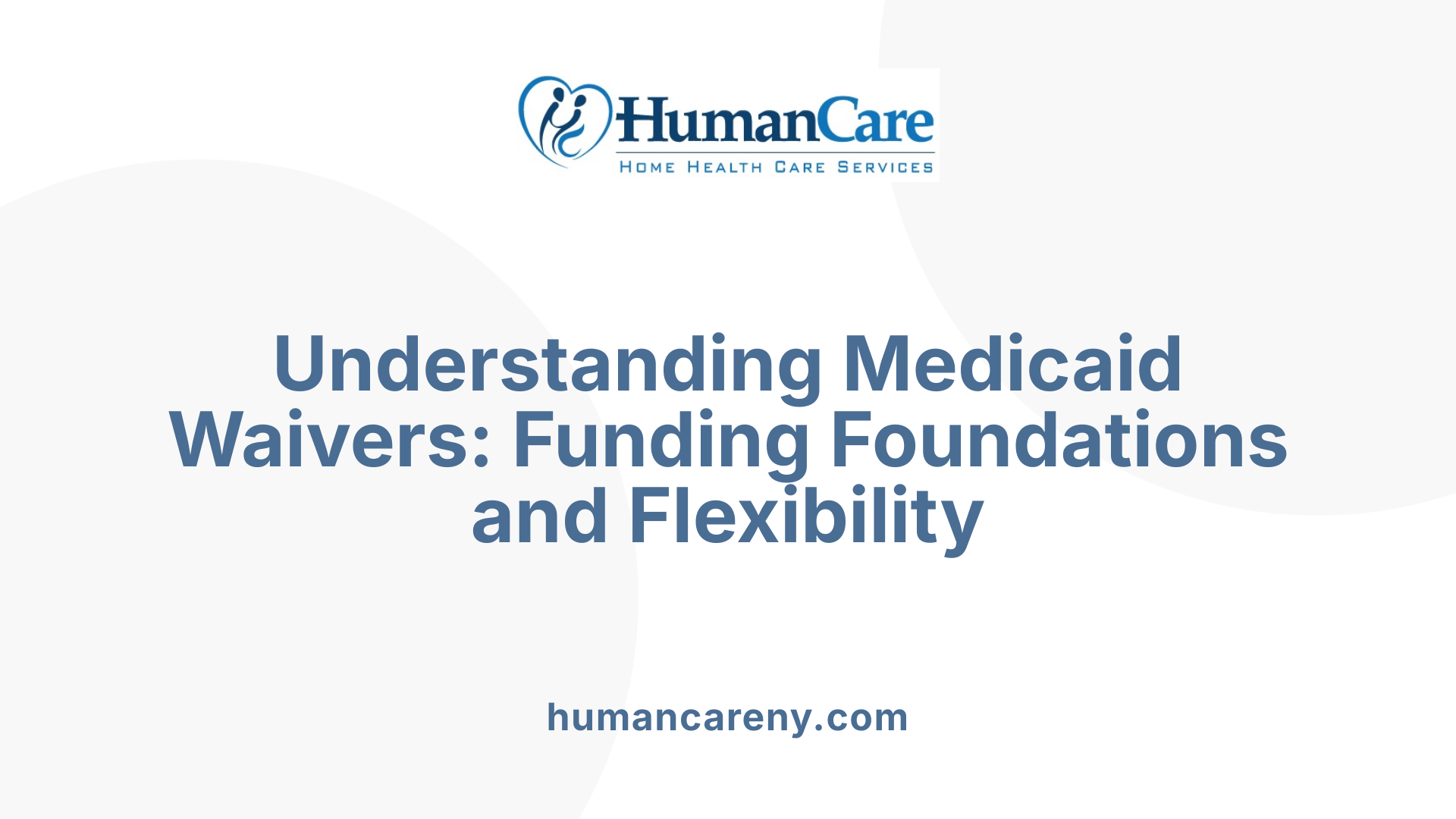
What are Medicaid waivers and how are they funded?
Medicaid waivers are special funding mechanisms that allow states to modify, expand, or craft their Medicaid programs beyond standard federal rules. They enable states to implement innovative health coverage approaches, create tailored services, or address unique population needs.
Federal approval is required to obtain these waivers, which often involve waiving certain federal requirements to provide greater flexibility. There are different types of waivers, such as 1915(c) waivers for home and community-based services (HCBS) and 1115 waivers for broader demonstrations and research projects. Both types must demonstrate budget neutrality, meaning they cannot increase overall federal or state spending.
Funding for Medicaid waivers mainly comes from federal matching funds. The federal government matches state spending at varying rates depending on the state’s income level and program type, known as the Federal Medical Assistance Percentage (FMAP). Some waivers, such as those for Medicaid expansion under the Affordable Care Act, are often supported with enhanced match rates or federal grants.
States can also leverage these waivers to access additional federal funds or flexibilities, which can include provisions like premium assistance, benefit adjustments, or service exclusions. The financial arrangement aims for a partnership: while states share the cost of innovative programs, the federal government helps to make these more sustainable.
Overall, Medicaid waivers serve as vital tools to help states develop more flexible, effective health coverage solutions by broadening what Medicaid can fund, all while sharing costs with the federal government.
Historical Evolution of Medicaid Waiver Funding
How have Medicaid waiver program funding trends evolved over time?
Medicaid waiver program funding has experienced a steady upward trajectory over the years. Initially introduced as a way to provide more flexible and innovative services beyond traditional Medicaid coverage, waivers have increasingly expanded in scope and scale.
The growth has been driven by several factors, including broader eligibility criteria, enhanced benefits, and a rising demand for long-term care and community-based services. Policy shifts, such as the implementation of the Affordable Care Act, have further accelerated these trends by encouraging states to adopt waivers to improve coverage and reduce costs.
Funding variability across states is significant, influenced by differing policies, priorities, and federal matching rates. These rates, which in FY 2025 range from 50% to 77%, determine the share of federal funds that states receive for waiver programs.
During economic downturns, such as the COVID-19 pandemic, Medicaid waiver spending surged, reflecting increased enrollment and the rising need for long-term supports and services. These periods demonstrated the importance of flexible federal funding mechanisms to respond swiftly to emergent health needs.
Overall, the pattern shows sustained growth in Medicaid waiver funding, although the pace and extent of increases are shaped by policy changes, state-level decisions, and budgetary considerations. The ongoing expansion of services, especially around home-based and community-based support, underscores Medicaid's evolving role in health and social care.
| Year | Funding Growth | Key Policy Drivers | Notes |
|---|---|---|---|
| 2000s | Moderate increase | Early expansion efforts | Focused on demonstration projects |
| 2010s | Accelerated growth | ACA implementation | Larger scope of services |
| 2020s | Continued upward trend | Response to pandemic | Increased enrollment, LTSS demands |
This ongoing evolution underscores the importance of advocacy and strategic planning to ensure sustainable funding for Medicaid waivers, vital for supporting vulnerable populations.
Funding’s Impact on Access and Quality of Care
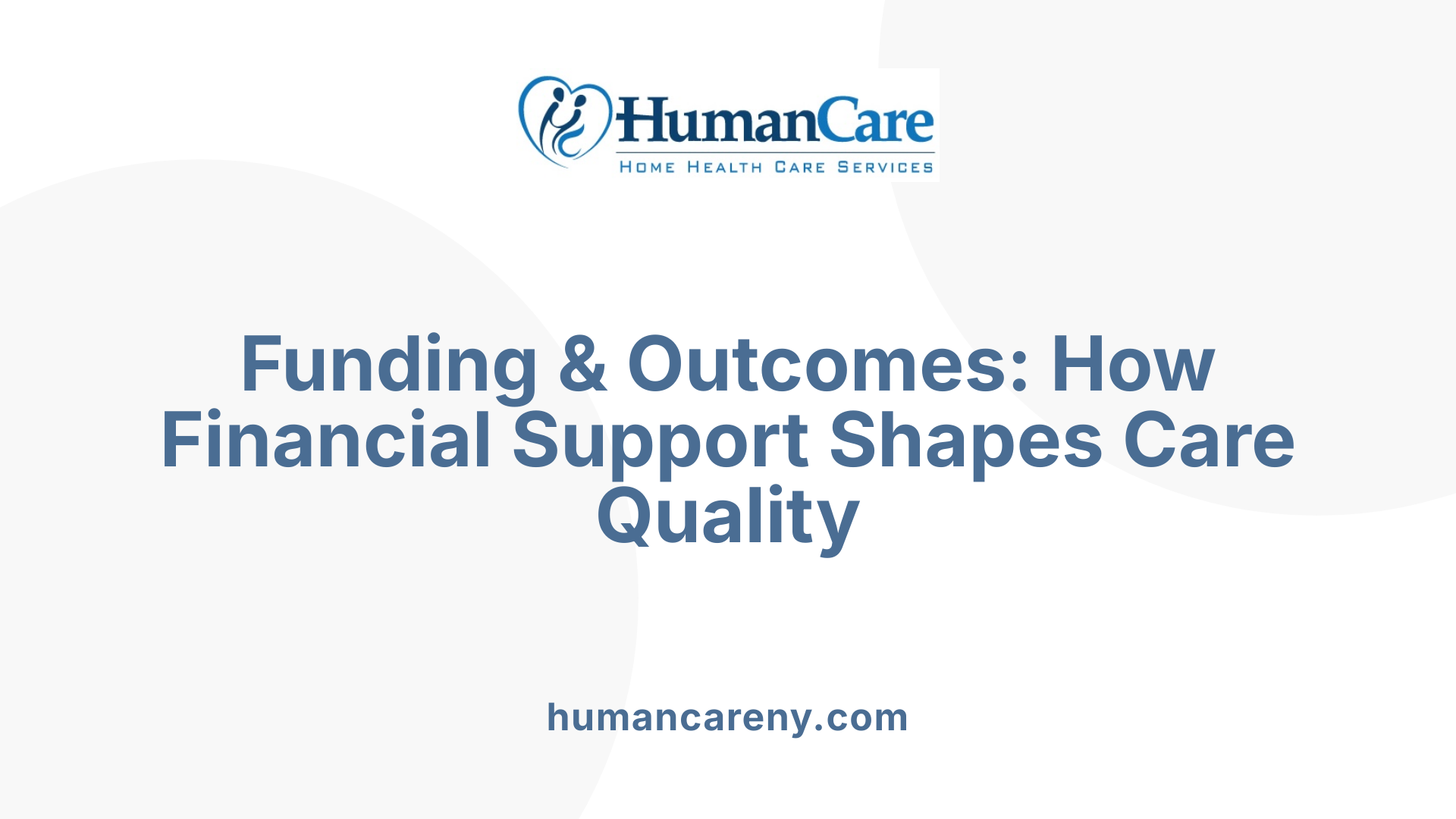
How does funding impact access, benefits, and outcomes in Medicaid waivers?
Funding is a central factor that influences how Medicaid waivers operate and the level of services they provide. These waivers allow states to test new approaches for delivering Medicaid services, often addressing specific health needs or gaps in coverage.
Adequate funding enables states to expand access by increasing eligibility or offering more comprehensive services. For example, with sufficient funds, states can implement programs that go beyond standard Medicaid coverage to include social determinants like housing support or food assistance. Such investments can lead to better health outcomes by addressing factors outside traditional healthcare, which play a significant role in overall well-being.
The benefits offered through waivers often depend on the level of funding allocated. Well-funded programs can provide a broader range of services, including in-home care, employment supports, and other community-based services. This not only improves quality of life for enrollees but can also reduce long-term costs by preventing more serious health conditions.
However, federal policy shifts pose challenges to funding stability. Restrictions on social service funding or limitations on provider reimbursements can reduce the scope of what waivers can achieve. These policies may lead to shortened program durations or restrictions on certain benefits, ultimately affecting access and outcomes.
States utilize waivers to tailor services to their populations’ needs, which has led to a wide variation in availability and scope. While this flexibility is beneficial, it also means that the level of access and quality can vary dramatically depending on state funding and policy priorities.
In summary, the amount and stability of funding directly impact the scope of services, access to care, and health results in Medicaid waivers. Sufficient and sustained funding can significantly improve health outcomes by supporting comprehensive, innovative programs. Conversely, funding constraints and policy restrictions can hinder progress, limiting the full potential of waiver initiatives.
Strategies for Effective Advocacy
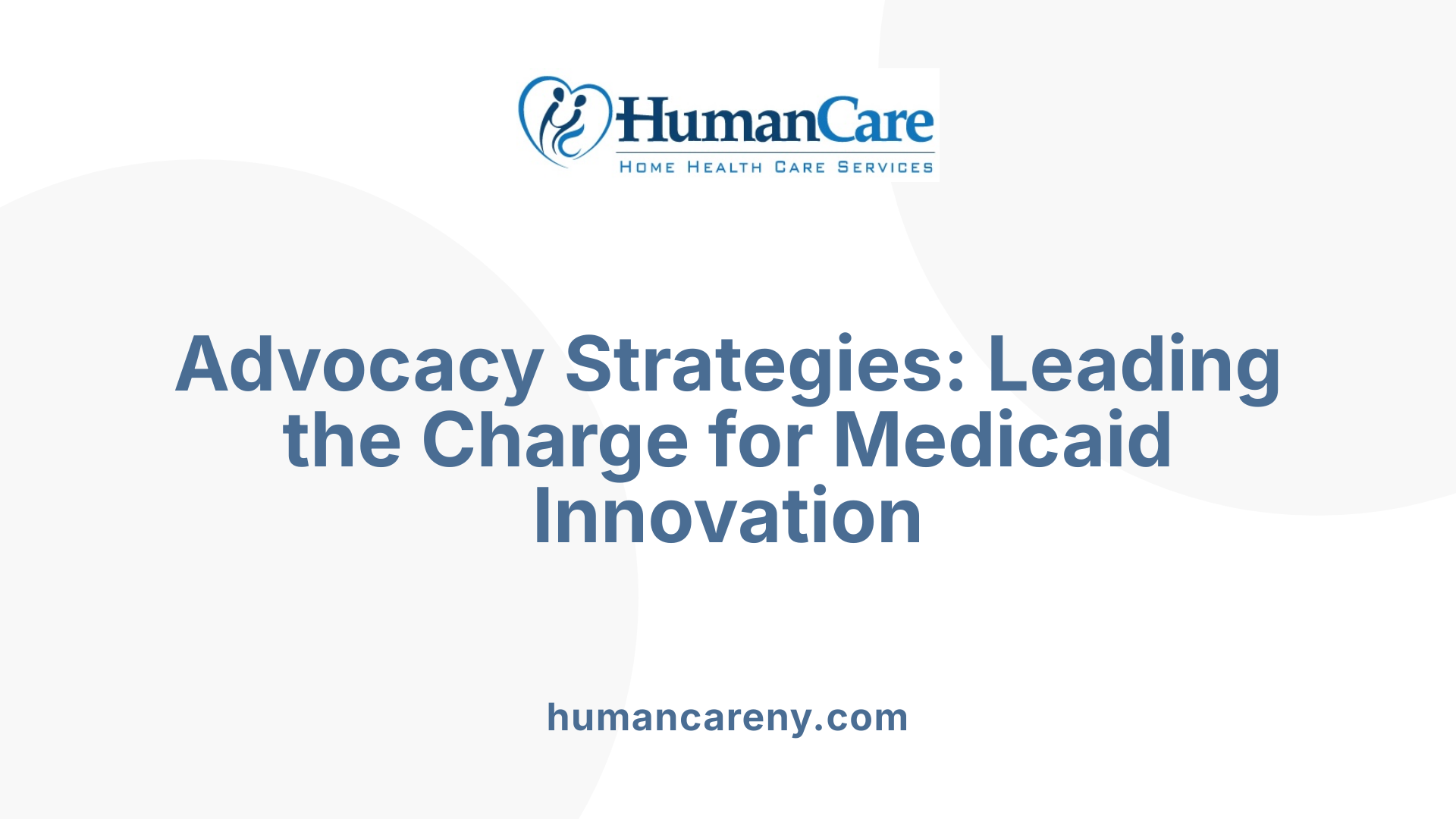
What strategies can advocates use to effectively promote Medicaid waiver programs?
Advocates aiming to promote Medicaid waiver programs can employ a variety of strategic approaches to maximize their impact. Building strong relationships with policymakers through direct meetings and ongoing dialogue is essential. Providing compelling data that illustrates the positive health outcomes and economic benefits of these programs helps convince decision-makers of their value.
Mobilizing beneficiaries and community supporters is another powerful tactic. Grassroots campaigns, testimonials from individuals who use the services, and community events can highlight real-world impacts and generate public support.
Monitoring and understanding current policies at both the federal and state levels enable advocates to tailor their efforts precisely. This includes being aware of waiver renewal processes, changes to eligibility criteria, and recent policy shifts.
Forming coalitions with organizations such as Justice in Aging, ASCO, NASW, and other industry groups helps amplify advocacy efforts. These partnerships facilitate resource sharing, unify messaging, and increase lobbying power.
Advocates should actively participate in public comment periods, legislative visits, and hearings. Using social media platforms and engaging in community discussions also helps broaden outreach.
Furthermore, staying informed about legal and procedural developments—such as new waiver approvals or restrictions—is crucial. Demonstrating the program’s benefits with data and fostering relationships with lawmakers and Medicaid officials are ongoing efforts that can protect and expand Medicaid waiver services.
By combining these tactics, advocates can effectively influence policies, ensure program sustainability, and expand access to Medicaid services for vulnerable populations.
State Variations in Medicaid Waiver Approaches
Are there different approaches to Medicaid waiver funding and advocacy in various states?
Yes, states adopt diverse strategies when it comes to Medicaid waiver funding and advocacy, influenced by their unique policy priorities, demographic needs, and available resources.
States use various federal tools such as Medicaid State Plan Amendments, 1115 demonstration waivers, and other types like 1915(c) and 1915(b) waivers. These mechanisms allow states to modify their Medicaid programs, extend coverage, and implement innovative services tailored to their populations.
For example, some states leverage waivers to expand access to home and community-based services (HCBS), helping to address long-term care needs while promoting cost-effective care models. Others focus on waivers that provide premium assistance or impose certain benefit restrictions.
Advocacy efforts in different states often involve a combination of strategic activities. These include submitting public comments on proposed rule changes, engaging in data-driven analysis to demonstrate program impact, and building relationships with state Medicaid agencies and federal officials. These actions help influence policy decisions and expand program flexibilities.
Implementation and oversight can vary significantly. Some states have a proactive stance, continuously negotiating new waivers to enhance coverage and services. Others face challenges related to provider capacity, quality assurance, or balancing cost constraints.
This variability illustrates how states tailor their approaches within the federal framework, aiming to meet local needs. Effective advocacy and careful policy design enable states to use waivers as tools for improving health outcomes and ensuring sustainability.
| State | Specific Waiver Types Applied | Focus Areas | Notable Strategies |
|---|---|---|---|
| West Virginia | 1115, 1915(c) | Increasing access, ex parte renewals | Streamlining renewal processes, building trust with agencies |
| Ohio | 1115, 1915(b) | SNAP and Medicaid coordination | Improving appointment scheduling, integrating data sources |
| Arizona | 1115, 1915(c) | WIC and preventive health services | Accepting electronic documentation, expanding service access |
Overall, these approaches reflect a combination of federal flexibility, state innovation, and advocacy efforts aimed at improving program efficiency, access, and health outcomes for vulnerable populations.
Policy Implications of Medicaid Waiver Financing
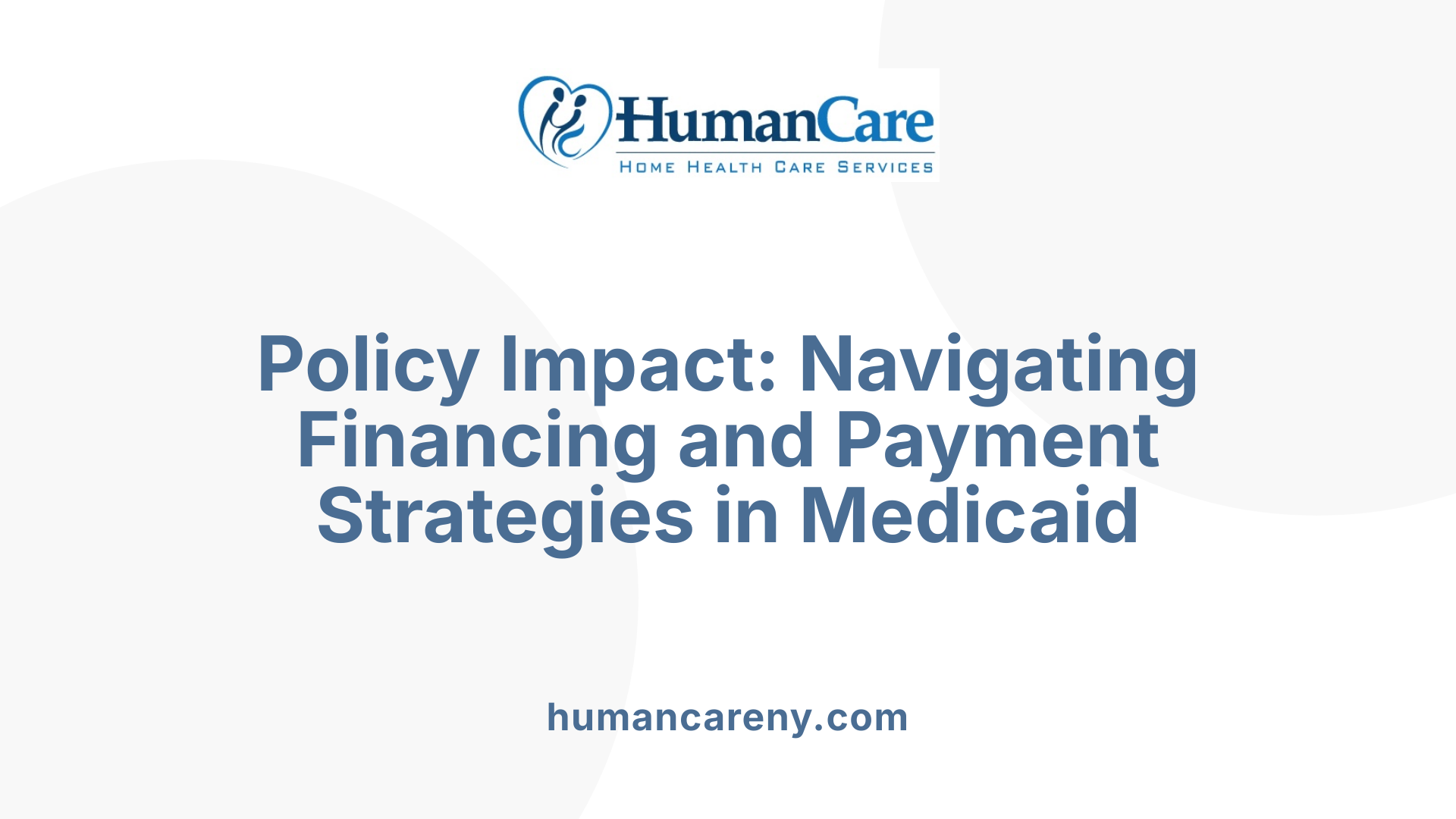
What are the policy implications related to Medicaid waiver financing and payment methods?
Medicaid waivers, particularly Section 1115 waivers, give states the ability to modify certain federal rules and customize their Medicaid programs to better fit local needs. These waivers can radically change how states finance and pay for Medicaid services, leading to significant policy impacts.
One major implication is the increased flexibility in designing benefits, eligibility criteria, and provider payments. States can develop innovative care models, such as premium assistance or managed care, which can improve access and quality but also introduce variability across different states. This variation can make it challenging to ensure equity and uniform standards nationwide.
Payment approaches within these waivers are crucial. They often involve shifting from traditional fee-for-service models to alternative models like value-based payments. These strategies aim to incentivize providers to deliver efficient, high-quality care while controlling costs. However, transitioning to these models requires careful planning, regulation, and ongoing assessment to prevent cost overruns and ensure that quality care reaches vulnerable populations.
Federal approval processes for waivers involve rigorous scrutiny, public input, and regular evaluations to maintain accountability. This oversight helps prevent waste and fraud but can also slow down innovative efforts.
While waivers foster experimentation and local responsiveness, they also pose risks related to financial sustainability. Since states can implement benefit restrictions or cost-sharing, there is concern about access barriers for the most vulnerable populations.
Overall, Medicaid waivers are powerful tools for policy reform, allowing states to adapt to changing healthcare landscapes. Nevertheless, balancing innovation with equity and sustainability remains a complex challenge for policymakers.
Eligibility and Service Access Challenges in Waivers
What are the common challenges related to eligibility and access in Medicaid waivers?
Medicaid waiver programs are designed to provide additional flexibility for states to expand or tailor services beyond federally mandated benefits. However, many individuals face hurdles when trying to access these services.
One of the main issues is the long waiting lists that often accompany waiver programs. Because of funding caps and limited enrollment slots, many applicants must wait months or even years before receiving needed services. These caps restrict eligibility and can leave vulnerable populations without timely support.
Eligibility criteria based on medical necessity and current support needs can also be highly stringent. Applicants must often demonstrate significant disability or complex health conditions, creating barriers for those with less obvious or fluctuating needs. The application process itself can be complex and challenging, requiring detailed documentation and navigating multiple agencies, which can be overwhelming for individuals and families.
States typically prioritize certain groups—such as seniors, individuals with disabilities, or those with severe health conditions—potentially resulting in disparities in access. Conversely, those not meeting strict criteria may be excluded, despite needing assistance.
Funding limitations represent another obstacle. Many waiver programs operate within tight budgets, restricting the scope of services or the number of beneficiaries served. This is especially problematic in regions with provider shortages, as beneficiaries may struggle to find qualified providers or receive timely care.
Variations across states further complicate access, with inconsistent policies, standards, and oversight. Some states may offer comprehensive waiver services, while others have more limited options, leading to inequitable access across the country.
Overall, these challenges highlight the necessity for ongoing advocacy aimed at streamlining eligibility processes, increasing funding, and standardizing quality and access to ensure Medicaid waivers truly serve those in need.
Innovations in Waiver Service Delivery Models
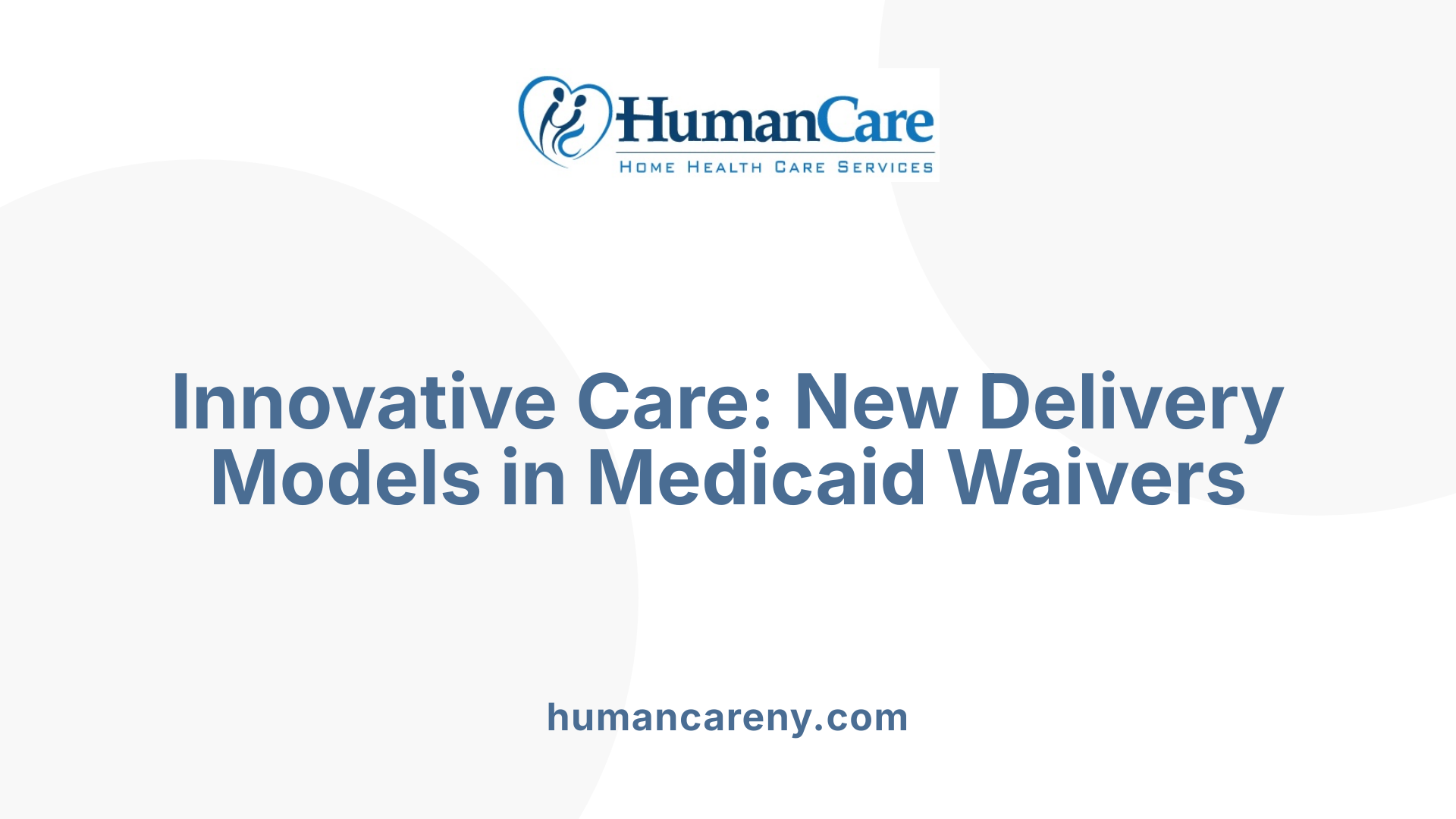
What are some innovative approaches in Medicaid waiver service delivery?
Medicaid waiver programs are exploring new ways to make health and social services more effective and accessible. These approaches aim to better meet the needs of individuals with diverse supports needs, especially those with disabilities or requiring long-term care.
One prominent innovation is the expansion of in-home and community-based services, which prioritize allowing individuals to receive care in familiar settings rather than institutional facilities. This includes services like personal assistance, adult day programs, and respite care tailored specifically for home environments.
Integrating social determinants of health into care models is another strategy. This involves addressing factors like housing, transportation, and employment as part of health planning, which helps improve overall well-being and can reduce health costs.
Technology also plays a critical role. Telehealth services, virtual monitoring, and assistive devices enable providers to deliver care remotely, especially vital in rural areas or for those with mobility challenges. These tools enhance access and support timely intervention.
States are adopting flexible, person-centered planning methods. These strategies emphasize individual preferences, goals, and choices, allowing service recipients to design their support plans around what matters most to them.
Innovative delivery models like mobile clinics and community health worker programs are also gaining traction. These models improve outreach and service provision by bringing care directly to communities rather than requiring beneficiaries to travel.
Direct contracting with service providers is another approach that can enhance efficiency and accountability. This method often involves partnerships with local organizations, ensuring services are culturally competent and locally accessible.
In specific cases such as autism-specific HCBS waivers or employment support programs, services are tailored to meet individual needs, fostering independence and community participation.
While these innovations promise better quality and cost savings, they require careful management to succeed. States must balance flexibility with maintaining standards of care and cost-effectiveness.
Overall, these evolving strategies in Medicaid waiver service delivery aim to make supports more responsive, personalized, and sustainable, leading to improved outcomes for individuals and the systems that serve them.
Medicaid and Social Factors: Beyond Healthcare Access
How do Medicaid waivers address social determinants of health?
Medicaid waivers play a vital role in tackling social determinants of health (SDOH) by allowing states to fund programs that incorporate social supports directly into healthcare services. These waivers enable states to extend their coverage beyond traditional medical care and address factors such as housing, employment, and nutrition, which greatly influence health outcomes.
Through innovative approaches, waivers support access to stable housing, transportation, and food security—elements essential for overall well-being. For example, some waivers fund community-based programs that help individuals find and maintain housing, thereby reducing homelessness and its associated health risks.
By removing barriers like transportation or access to nutritious food, these programs help vulnerable populations avoid unnecessary emergency healthcare visits and hospitalizations. This holistic approach aligns healthcare delivery with social needs, emphasizing prevention and early intervention.
Funding for community support services through waivers fosters social participation and inclusion, promoting health equity. Such strategies recognize that improving health outcomes requires more than medical treatment alone, but also addressing the broader social factors that impact health.
Consequently, Medicaid waivers are increasingly viewed as tools for systemic change, capable of reducing disparities and supporting overall health equity. They demonstrate the importance of integrating social supports seamlessly into healthcare, ultimately leading to healthier communities and more efficient use of healthcare resources.
Further exploration of how Medicaid waivers address social determinants can be found by searching for "Medicaid waivers and social determinants of health." This can provide additional cases and evolving strategies aimed at holistic health improvements.
The Future of Medicaid Waivers: Policy and Funding Outlook
What is the future outlook for Medicaid waivers considering current trends?
Medicaid waivers are expected to play an increasingly vital role in shaping how states design and deliver health coverage for low-income populations. As states explore innovative models to address rising healthcare costs and improve outcomes, waivers offer the flexibility needed to test new approaches outside of traditional Medicaid rules.
Recent trends show a growth in waivers focused on expanding coverage options, such as premium assistance programs that help beneficiaries access private insurance plans. States like Arkansas, Iowa, and Michigan have already implemented or sought waivers related to these models, signifying a move toward more customized benefits.
Furthermore, waiver approvals related to non-traditional services—such as in-home support for individuals with disabilities or autism—are becoming more prominent. This aligns with broader policy goals of increasing access to community-based services and reducing reliance on institutional care.
However, the future of Medicaid waivers also faces challenges. Federal policymakers emphasize maintaining cost-effectiveness and safeguarding access for vulnerable populations. As a result, more waivers are being restricted to short-term periods and subjected to rigorous evaluations.
Ongoing debates about work requirements, benefit limitations, and cost-sharing highlight the tension between innovation and protecting enrollees from undue barriers. The expansion of waivers in some states may lead to variability in coverage, raising concerns about equity and consistency nationwide.
Advocates expect that future developments will balance innovation with oversight, emphasizing transparency and data-driven adjustments. The continued reliance on federal approval processes and federal-state negotiations will shape the scope and focus of upcoming waiver initiatives.
Overall, Medicaid waivers are poised to remain a cornerstone of state-level Medicaid policy, fostering experimentation while navigating evolving federal priorities and funding constraints.
Policy implications related to Medicaid waiver financing and payment methods
Policy considerations around Medicaid waiver financing are significant, especially as states seek flexible ways to fund innovative services. Waivers often operate under budget neutrality requirements, meaning they must not increase overall Medicaid costs compared to traditional models.
This flexibility allows states to develop new payment methods, such as value-based payments that incentivize quality and efficiency, or bundled payments that promote coordinated care. However, designing these models requires careful balancing of incentives to ensure providers are fairly reimbursed while controlling costs.
Federal approval processes impose strict standards, demanding rigorous evaluation and public stakeholder input. Compliance with federal guidelines aimed at accountability influences how states structure their payments and service delivery.
The implications for financial sustainability are profound. While waivers can lead to better health outcomes and potentially lower costs in the long term, they also introduce variability that can create disparities across states.
Moreover, some policy debates focus on equity, questioning whether waiver-driven programs adequately serve historically underserved populations. Ensuring that innovations do not compromise access or quality remains a core concern.
In conclusion, Medicaid waiver financing and payment strategies are at the intersection of innovation, federal oversight, and economic sustainability. Thoughtful policy design will be crucial to harnessing their potential while safeguarding such programs' integrity and fairness.
Conclusion: Strengthening Advocacy and Policy Foundations
Effective advocacy in the realm of Medicaid programs, including waivers, hinges on strategic and informed efforts. Advocates should prioritize engaging policymakers through direct meetings and providing compelling, data-driven evidence of the benefits, both in health outcomes and economic impact, that Medicaid waivers can deliver. Mobilizing communities and beneficiaries through grassroots campaigns, testimonials, and public comment periods can create powerful voices that influence policy.
Understanding current policy landscapes—such as waiver renewal processes, eligibility adjustments, and recent federal and state policy shifts—is critical. This knowledge allows advocates to tailor their messages and identify strategic opportunities for influence.
Building coalition support by partnering with organizations like Justice in Aging, ASCO, NASW, and other industry allies enhances resources, amplifies advocacy efforts, and fosters policy change. Using a range of advocacy tools—such as legislative visits, social media outreach, public hearings, and participation in comment periods—helps spread messages and increases the likelihood of policy adoption or preservation.
Staying informed about legal changes and procedural developments ensures advocates can respond swiftly to threats like Medicaid cuts or proposals for work requirements. Demonstrating the tangible benefits of waivers through data and case studies reinforces the importance of these programs.
Establishing and nurturing relationships with lawmakers and Medicaid officials facilitates ongoing dialogue and support for expanding access to Medicaid waiver services. Through strategic, well-informed, and coalition-driven efforts, advocates can reinforce a strong foundation for Medicaid policy that prioritizes equitable access and quality care.
For further research, look into advocacy strategies for Medicaid program support by searching
Concluding Remarks: Advancing Equity and Innovation in Medicaid
The dynamic landscape of Medicaid waiver funding and advocacy underscores the necessity for informed, strategic efforts to maximize program potential. As funding trends evolve and policy frameworks shift, stakeholders—including advocates, policymakers, and providers—must collaborate to ensure equitable access and sustainable financing. Emphasizing community engagement, leveraging data-driven advocacy, and fostering state-level innovation are pivotal for harnessing the full benefits of Medicaid waivers to improve health outcomes for vulnerable populations. Policymakers should also consider the policy implications of their financing decisions, ensuring that flexibility and accountability go hand in hand, ultimately creating a more equitable and effective Medicaid system for the future.
References
- Toolkit: Using Administrative Advocacy to Improve Access ...
- Advocates' Guide to Equity in Medicaid
- Why Did They Do It That Way? Medicaid Financing
- A Guide to Policy Compromises in Recent Section 1115 ...
- Home and Community Based Services (HCBS) Waivers
- 1915(c) HCBS Waiver Payments and Financing Trends ...
- Medicaid Waiver Tracker: Approved and Pending Section ...
- How Has Medicaid Evolved Over Time? - Medicaid 101
- Medicaid Section 1115 Waivers: The Basics
- Waivers





























































































.avif)





